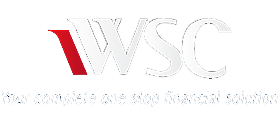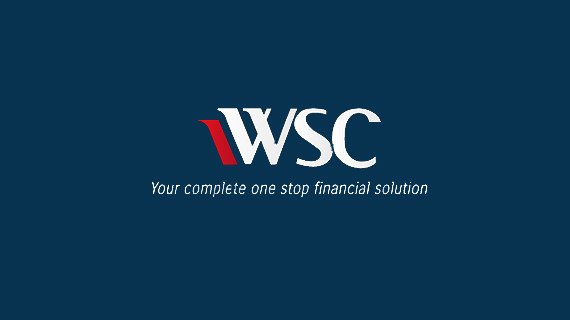July 2023
Economic and market overview
- July was a relatively uneventful month in financial markets and volatility remained low.
- Generally speaking, risk assets continued to perform well despite a sharp increase in the oil price. In fact July was the best month for oil since January 2022.
- Inflation seems to coming off the boil in most key regions, reducing the likelihood of significant further increases in interest rates.
Bond yields did not move meaningfully against this background, resulting in a quiet month for fixed income markets.
US: Inflation in the world’s largest economy has fallen to its lowest level in more than two years. Headline CPI fell to an annual rate of 3.0% in June.
- The ‘core’ measure – favoured by policymakers and which strips out food and energy prices – rose at an annual rate of 4.8%, although this was the smallest increase since 2021.
- The Federal Reserve is still aiming to bring inflation down to 2%, although it seems clear that aggressive policy tightening over the past year or so is having its desired effect. In June 2022 the headline inflation rate was 9.0%, so progress has been made.
- Officials raised the Federal Funds rate by a further quarter percentage point during July, taking borrowing costs to their highest level since 2001. That said, increasing numbers of forecasters are suggesting this might be the final hike before interest rates start to come down again in 2024.
- This could be good news for President Biden, who is preparing for a re-election campaign next year. Persistently high inflation and rising borrowing costs are unwelcome for most Americans and could help sway public opinion ahead of the vote.
For now the US labour market remains resilient. More than 200,000 new jobs were created in June and wages continue to rise quite strongly. Encouragingly for Biden, this is improving the general mood in the US; a closely-watched gauge of consumer confidence has risen to its highest level in nearly two years.
Australia: As anticipated, the Reserve Bank of Australia left official interest rates on hold at 4.10% at its meeting in early July (and again when policymakers convened on 1 August).
- Like in the US, investors increasingly believe that this will be the peak in interest rates in this cycle. The policy tightening that has already occurred is filtering through the economy and dampening pricing pressures.
- Inflation fell to an annual rate of 6.0% in the June quarter, down from 7.0% in the first three months of the year. This moderation likely affected policymakers’ deliberations at August’s meeting.
- Moreover, the monthly reading for June showed prices rising by 5.4% from a year earlier, affirming that a downtrend in inflation is firmly in place.
This is feeding through to both consumer and business confidence, both of which improved in the most recent surveys.
New Zealand: Similarly in New Zealand, there are hopes that interest rates might have peaked (at 5.50%).
Inflation data for the June quarter showed prices rising at an annual rate of 6.0% – the same as in Australia – and policymakers have indicated a willingness to pause their policy tightening program.
Europe: According to preliminary forecasts, the annual inflation rate in the Eurozone slowed for third consecutive month in July, to 5.3%. This was the lowest level since the start of 2022 and reflected a moderation in energy prices.
- Less positively, the rate of inflation in services sectors continued to increase. This remains a concern for the European Central Bank and prompted policymakers to increase official interest rates by a further quarter of a percentage point in July.
- While interest rate hikes are having their desired effect on the inflation front, they appear to be acting as a strong headwind for overall economic activity levels. The International Monetary Fund (IMF) is now forecasting that GDP in Germany – the biggest economy in the region – will contract by 3.0% this year.
- More broadly, a gauge of conditions in the manufacturing sector in the Eurozone fell to its weakest level in more than three years.
- The outlook in the UK is a little brighter, with the IMF now expecting the economy to grow 0.4% in 2023. This is a meaningful uplift from April, when the UK was forecast to be the worst performing major economy in the world this year.
- Following widespread industrial action in recent months, the UK Government announced pay increases of 6%+ for public sector workers. This is feeding through to overall wage growth, which is running at the fastest rate on record
- Such strong wage growth is expected to continue to exert upward pressure on inflation. If so, further policy tightening cannot be ruled out.
The Bank of England is scheduled to convene on 3 August and consensus forecasts suggest official interest rates will be raised further following this meeting.
Asia/EM: Chinese export data continues to deteriorate, clouding the outlook for overall economic growth. The value of exports fell 12.4% in June from the same month a year ago, which was the biggest drop since the Covid period in 2020.
- There was a fair amount of scrutiny on Chinese news during the month owing to a meeting of the Politburo, the ruling Communist Party’s decision-making committee.
- According to the official Xinhua News Agency, China will pursue a number of “counter-cyclical” policy measures to support domestic activity levels and help offset faltering export demand.
- An easing of restrictions in the property sector is also anticipated. This area of the economy has been struggling for more than two years, following the introduction of more stringent lending standards.
- Geopolitical tensions in China remain elevated too. Officials announced that exports of two materials used in the semiconductor industry will cease in August, after the US, Japan and Netherlands imposed curbs on chip exports to China.
- In other emerging markets – and if you thought inflation was problematic in Australia – Turkey’s central bank said it expects inflation to reach 58% by the end of this year! Official interest rates in the country remain at an eye-watering 15%.
Australian dollar
- The Australian dollar fared well in the first half of July, but lost ground towards month end.
- In the month as a whole the AUD gained 0.8% against the US dollar – closing at just over US67c – but depreciated by 0.7% against a trade-weighted basket of international currencies.
Australian equities
- ‘Confession season’ for ASX-listed companies commenced in July, with a number of firms testing investor expectations with fourth quarter and full year guidance updates ahead of August’s reporting season.
- In aggregate, earnings expectations for the next 12 months declined over the month, but the market was supported by improving inflation-related data and better-than-expected earnings results from large cap companies in the US.
- Nine out of 11 sectors in the S&P/ASX 200 Accumulation Index generated positive returns, helping the Index rise 2.9% over the month. This extended gains in the calendar year to date to 7.5%.
- Energy stocks such as Beach Energy (+19.6%), Karoon Energy (+13.2%) and Woodside Energy Group (+10.3%) were bolstered by stronger oil prices. WTI crude oil prices rose more than 15% over the month, to more than US$81/barrel, reflecting an improving demand outlook as inflationary pressures ease. Production cuts from OPEC+ member countries are also limiting supply and helping support prices. The Energy sector was the standout performer in July, ending the month 8.8% higher.
- The strength of Block (+21.4%), along with the major banks ANZ (+8.6%), NAB (+7.8%), Commonwealth Bank (+5.4%) and Westpac (+4.7%), underpinned a 4.9% rise in the Financials sector. That said, Perpetual (-4.7%), Steadfast (-2.8%) and ASX (-1.4%) performed less well.
- The Health Care sector (-1.5%) was a notable lagged, reflecting disappointing returns from Healius (-9.7%), Ansell (-9.7%) and CSL (-3.2%). Ansell called out a number of earnings headwinds, including rising interest costs and excess inventory as demand from distributors falters. These issues led to a lower-than-expected earnings guidance range for FY24. To combat some of the headwinds, the company announced an intention to slow production and implement cost reduction and productivity programs.
- Consumer Staples (-1.1%) stocks also tended to underperform the broader market. Endeavour Group was the worst performer in this area of the market, falling 3.6% following the Victorian Government’s announcement of a number of regulatory reforms for venues with electronic gaming machines.
- Small Caps outperformed their larger peers in July, with the S&P/ASX Small Ordinaries Index adding 3.5%.
- The Consumer Discretionary, Consumer Staples and IT sectors all added more than 8%. The Materials sector (-0.4%) was the only sector to finish the month in the red.
Global equities
- Suggestions that interest rates might be close to peaking in key regions boosted sentiment towards risk assets and helped equity markets generate pleasing returns. The MSCI World Index added 2.1% in AUD terms.
- Large cap companies in the US and Europe started announcing their quarterly results for the three months ending 30 June. On the whole, these reports were well received by investors and affirmed that profitability is holding up quite well, despite increases in costs in many cases.
- The encouraging tone of profit announcements in the US helped the S&P 500 Index rise 3.2%. This was the fifth consecutive month of gains for the Index; the longest winning run for around two years. The S&P 500 Index has now returned more than 20% in the calendar year to date.
- Technology stocks continued to outperform, enabling the NASDAQ to rise 3.8% and extend gains in 2023 to more than 37%.
- European markets fared well too, particularly Italy where the MIB Index closed the month more than 5% higher. The larger German and French stock exchanges added between 1% and 2%. It was a similar story in the UK, where the FTSE 100 Index returned 2.2%.
- Hong Kong’s Hang Seng (+6.2%) led gains in Asia, on optimism that the Chinese Government will introduce various stimulus measures and provide support to beleaguered property developers. China’s CSI 300 and Singapore’s Straits Times also performed well, adding 4.5% and 5.2%, respectively.
- The optimistic mood and healthy risk appetite among investors enabled emerging markets to generate even stronger returns. The MSCI Emerging Markets Index returned 6.3% in July and closed the month close to its highest level in more than a year.
Listed property
- Global property securities fared well in July, consistent with gains in broader equity markets.
- The Federal Reserve raised US interest rates again during the month, but lower-than-expected inflation prints and generally resilient economic data in the US helped support sentiment towards real estate markets.
- The FTSE EPRA/NAREIT Developed Index returned 3.2% in AUD terms.
- The best performing regions in local currency terms included Germany (+17.5%), Sweden (+12.5%) and Spain (+8.8%).
- Generally speaking, Continental European markets rallied over the month on hopes that inflation would moderate in the region, as it has in the US and UK.
- Laggards included Hong Kong (+1.3%), Japan (+1.6%) and Canada (+1.8%), although it was pleasing to see returns from all countries close the month in positive territory.
- A-REITs added 3.8%, with stocks in the Industrial and Retail sub-sectors generating particularly favourable returns.
Global and Australian Fixed Income
- Yields on 10-year Treasuries in the US traded in a 30+ bps range in July, but closed the month just 9 bps higher.
- Similar moves were seen in Europe, with yields on 10-year German bunds closing July 10 bps higher.
- The receipt of higher bond coupons helped support returns, but the upward move in yields in the US and Europe unfortunately resulted in a small negative return from the Bloomberg Global Aggregate Index in AUD terms.
- The Bank of Japan relaxed its yield curve control mechanism, announcing that yields on 10-year Japanese Government Bonds would be allowed to rise above the previous 0.50% ceiling. This resulted in a sharp sell-off in the local bond market and required the Bank of Japan to intervene and buy bonds on the open market to arrest the weakness.
- Locally, yields on 10-year Australian Commonwealth Government Bonds rose 4 bps and remained slightly above the 4% level. This was a modest headwind, but the receipt of higher coupons helped the Bloomberg AusBond Composite 0+ Year Index return 0.5%.
Global credit
- A further narrowing in credit spreads in both the investment grade and high yield sub-sectors provided a healthy tailwind for credit and enabled corporate bonds to generate pleasing returns.
- The release of generally favourable earnings announcements in the US and Europe helped support sentiment, as did suggestions that interest rates might be close to peaking.
- European names fared particularly well over the month and outperformed their peers in the US.
- Less positively, sentiment towards Asian credit continued to be affected by ongoing financial issues in the Chinese property development sector, despite the possibility of some support measures being introduced.













